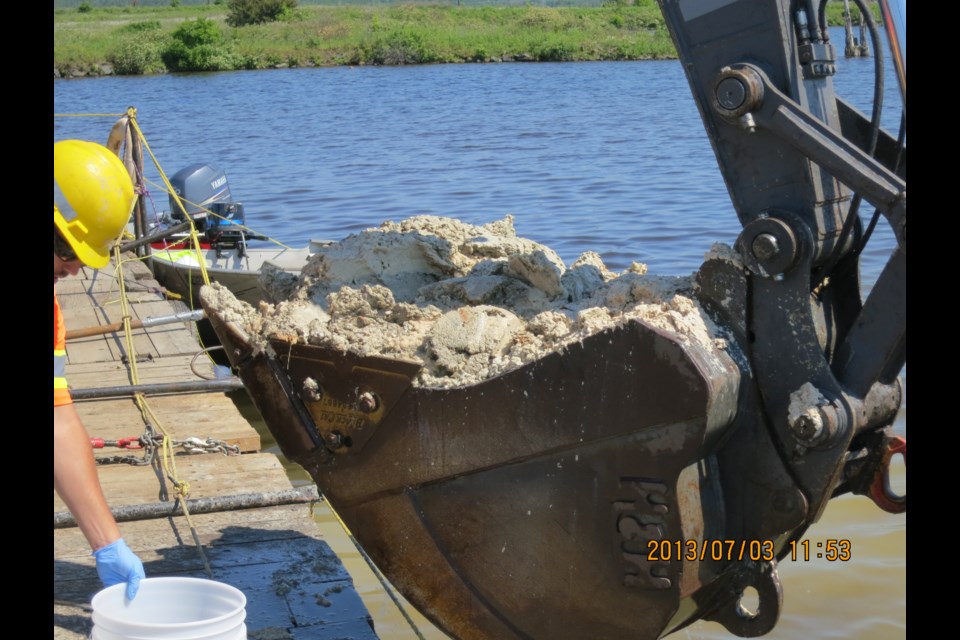THUNDER BAY -- The question of jurisdiction over Thunder Bay Harbour has emerged as a complication confronting groups working toward a cleanup of mercury-contaminated sediment.
More than three years after consultants identified options for dealing with the problem, up to 400,000 cubic metres of pulpy material, up to four metres thick in places, remains at the bottom of the north harbour.
The Thunder Bay Port Authority (TBPA) administers the port and the harbour bottom on behalf of the federal government, but Transport Canada is the legal owner.
Tim Heney, the authority's CEO, says his organization has served in an advisory role with the Remedial Action Plan, the group that monitors harbour pollution. However, cleaning up the mercury is not a designated priority for the authority itself.
"The history of that deposit of kraft pulp pre-dates the port authority...We only came into existence in the 50s. Prior to that the harbour was actually provincial."
Heney said no new pulp has gone into the lake-bottom deposit in decades, and there is no evidence, to his knowledge, that mercury is currently emanating from the pulp into the environment.
He said "It's hard to say what would trigger a cleanup of it. There's no real workable solution at this point."
Heney noted that the TBPA had suggested the material be moved to a dredge disposal site near the south end of the harbour, at Mission Bay, but Fort William First Nation objected to the idea.
"There's a bunch more work to be done. There's more testing to see if there is any kind of contamination coming from it. How to make it someone's priority?...It's a difficult one to move forward, for sure," Heney said..
In an interview in November, RAP spokesperson Jim Bailey stated that without a lead organization or agency to lead the cleanup the project can't proceed.
RAP has recently explored the feasibility of getting the contaminated site added to a federal list of contaminated sites, which might make a cleanup eligible for federal funding.
But the project, Bailey said, would still require a cooperative effort involving numerous organizations.
The Great Lakes program coordinator for Environment Canada, Kate Taillon, said the department is committed through an agreement with Ontario to having a cleanup plan in place by 2019.
Taillon added, however, that it's unknown if that means such a plan will actually be implemented by 2019.
"Although Transport Canada is technically the owner" of the water lots in the harbour, she said, "the Port Authority is the only one with the authority to take management actions here."
Taillon said a mechanism exists through the Canada Marine Act, under which the Port Authority may be able to apply for federal funds to effect an environmental cleanup, although she's not sure that provision has ever been used anywhere in the country.
Heney, however, disagrees.
"Actually, we're prohibited from applying for funds for the cleanup...It would have to be either Environment Canada or Transport Canada, the parties that could actually file that application," he said.
Any cleanup, if and when it happens, will cost in the tens of millions of dollars.
Bailey has stated previously that "Transport Canada has not been fully engaged in this process. Work needs to be done to hopefully get them engaged."
